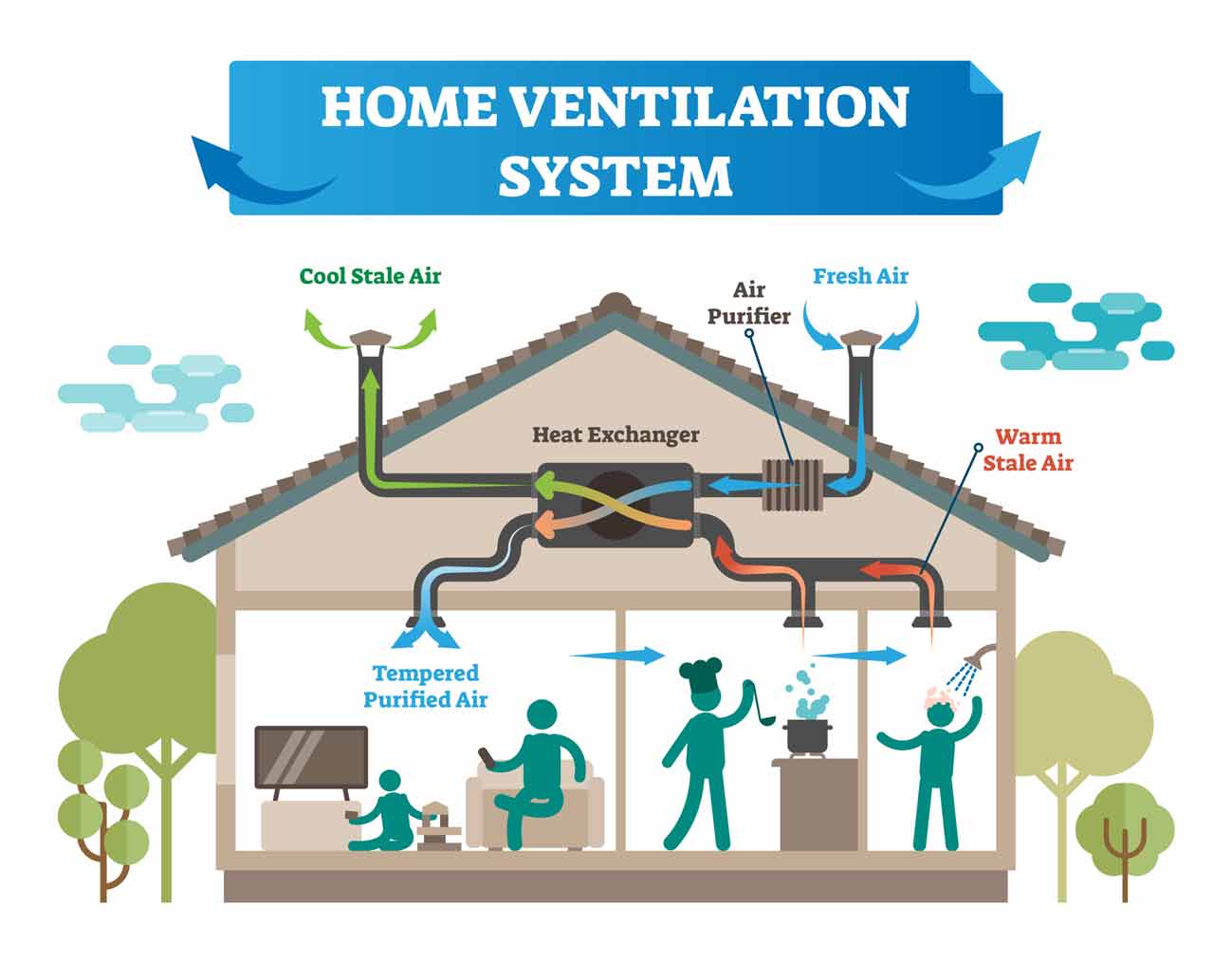HRV Selection Guide: What Features to Check
Wiki Article
The All-Inclusive Guide to the Uses of Heat Recovery Ventilation in Modern Buildings
Heat Recovery Ventilation (HRV) systems represent a significant innovation in constructing technology (HRV Heat Recovery Ventilation). They give a technique for trading stagnant indoor air with fresh outside air while lessening energy loss. This strategy not just enhances interior air high quality but additionally adds to power effectiveness in both domestic and industrial structures. Recognizing the numerous applications and advantages of HRV can disclose its critical duty in modern-day style and sustainability initiatives. The ramifications of this modern technology deserve discovering betterUnderstanding Heat Recovery Ventilation Systems

Several contemporary structures prioritize power effectiveness, understanding warmth healing ventilation (HRV) systems is essential for enhancing indoor air top quality and decreasing power intake. HRV systems work by transferring warm from stale interior air to incoming fresh air, properly preserving comfortable indoor temperature levels while decreasing power loss. These systems are composed of a heat exchanger, fans, and ductwork that assist in the circulation of air. Throughout winter, HRV systems record and reuse heat from the outgoing air, while in summertime, they can help cool down incoming air. By constantly trading air, HRV systems additionally reduce moisture and the focus of interior pollutants. Appropriate setup and maintenance of HRV systems are necessary for their performance and effectiveness in enhancing overall building efficiency and comfort.
Benefits of Heat Recovery Ventilation
Heat recovery ventilation systems provide countless benefits that improve both energy effectiveness and indoor air top quality in modern-day buildings. By capturing and recycling energy from exhaust air, these systems greatly reduce cooling and heating costs, causing reduced energy consumption. In addition, they maintain a consistent circulation of fresh outdoor air, reducing the threat of indoor air toxins and allergens. This constant exchange aids regulate moisture degrees, stopping mold and mildew growth and making sure a much healthier living environment. In addition, HRV systems add to sustainability objectives by reducing overall carbon impacts. Their ability to maximize ventilation without giving up thermal comfort makes them a beneficial addition to modern building style, promoting both economic and ecological advantages.Applications of HRV in Residential Structures
As house owners increasingly focus on power effectiveness and interior air quality, the applications of warmth recovery ventilation (HRV) systems in household buildings have actually become a lot more prevalent. HRV systems are especially advantageous in securely sealed homes, where preserving fresh air blood circulation is important for stopping dampness buildup and interior toxins. They effectively transfer warm from outward bound stale air to incoming fresh air, minimizing power prices connected with home heating and air conditioning. In addition, HRVs can enhance comfort levels by controling moisture and temperature level. They are also adaptable for different property layouts, consisting of single-family homes and multi-unit buildings. Overall, integrating HRV systems supports lasting living techniques while ensuring a healthier indoor environment for residents.HRV in Industrial and Commercial Setups
In commercial and industrial settings, the implementation of warm healing ventilation (HRV) systems has come to be significantly crucial for optimizing power performance and keeping air top quality. These systems properly move warmth from exhaust air to inbound fresh air, lowering the requirement for extra heating or cooling. This not only decreases power expenses however also adds to sustainability initiatives. Industries such as manufacturing, warehousing, and office complex benefit significantly from HRV systems, as they help regulate temperature level and moisture degrees, making sure a comfortable and productive environment. HRV systems help in removing impurities and excess moisture, improving interior air high quality. As regulations around air high quality come to be stricter, the fostering of HRV technology is most likely to grow, making it an essential element of modern-day commercial and commercial framework.Future Trends in Heat Recovery Ventilation Modern Technology

Regularly Asked Questions
How Does Heat Recovery Ventilation Impact Indoor Air High Quality?
Heat recovery ventilation substantially boosts indoor air quality by constantly exchanging stale indoor air with fresh outside air while recuperating energy. This process minimizes toxins, keeps ideal moisture degrees, and ensures a much healthier atmosphere for residents.Can HRV Equipments Be Set Up in Existing Buildings?
HRV systems can without a doubt be set up in existing buildings. Retrofitting might require alterations to ductwork and air flow layouts, however it considerably boosts energy performance and indoor air high quality, making it a practical option for older structures.What Upkeep Is Required for HRV Equipments?

Are There Details Climates Where HRV Is Much More Effective?
Heat HRV Heat Recovery Ventilation recovery ventilation systems are especially effective in environments with significant temperature level differences in between periods. These systems maximize energy effectiveness by recovering heat from exhaust air, making them perfect for both cold and reasonably cozy atmospheres.How Do HRV Systems Affect Energy Bills?

Report this wiki page